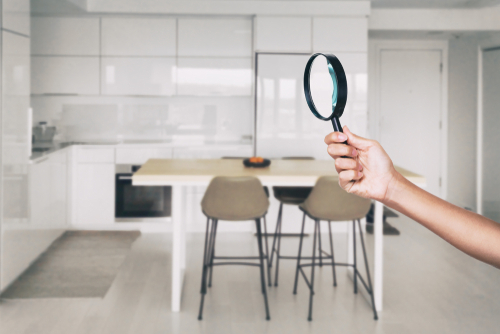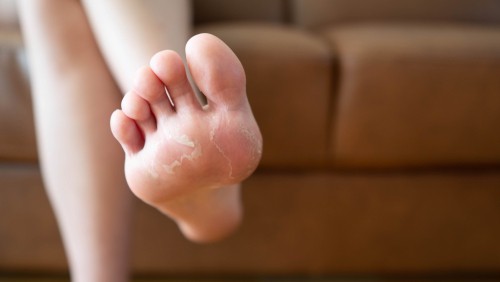
How to Remove Athlete’s Foot Fungus from a Bathroom? As you might get an idea by the name, it isn’t necessary to be an athlete to have Athlete’s Foot, which can result in itching, blisters, burning, and stinging sensation between toes and on the feet soles. While the infection doesn’t seem like a serious life-threatening disease, it becomes highly uncomfortable.
If anyone in your house is having an athlete’s foot, you must know the right way of handling laundry to the prevention of spreading it to other people.
Table of Contents
What do we mean by Athlete’s Foot Fungus?
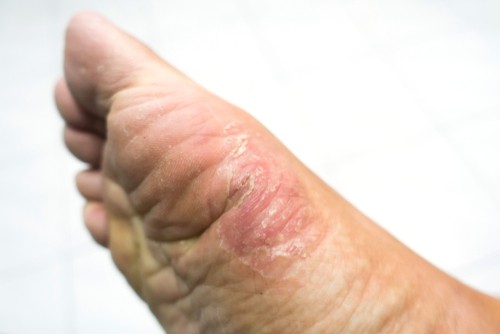
The Athlete’s Foot (tinea pedis) happens due to a fungus. The infected humans shed tinea fungus spores in hard surfaces such as floors of locker spaces, bathrooms, and decks of pools and these multiply rapidly.
These spores are also shed in shoes, socks, towels, damp workout clothes, interiors of gym bags, and sports uniforms from wrestling singlets to the cheer uniforms. The skin exposed to excessive warmth and moisture such as feet in shoes leads to encouraging the growth of fungus.
What are the Symptoms and Signs of Athlete’s foot?

The general main symptom of an Athlete’s foot fungus is a red rash with a scaly appearance that typically develops between toes before spreading of itchiness – most often becomes severe after you take the shoes off and socks with blisters in a lot of cases.
Why Bathrooms are Contagious for Athlete’s Foot?
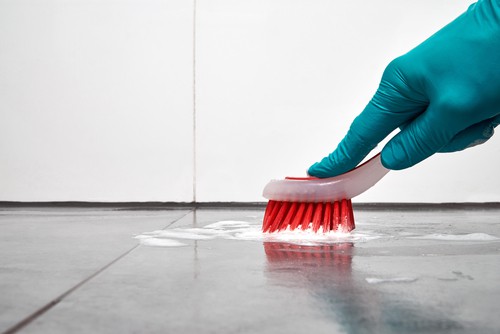
Athlete’s foot fungus is known to thrive in warm and moist areas. The wet and moist surface such as locker room, bathroom, shower, pool area, and any other similar type of environment is a fine ground for breeding fungus.
When the bare feet are in contact with the surface such as the contaminated floor of the bathroom, the fungus simply gets transferred to the skin. Skin that is damp and warm offers a great place for fungus growth as well.
Also, in the bathroom, it is possible to pick the athlete’s foot after burrowing, socks, towels, or clothing that is used by anyone with fungal infection.
The athlete’s foot fungus isn’t visible, so you can’t know whether it lies on the shower surface or your sock pair. Generally, you can assume it to be on any damp floor with frequent public use, or surface like locker room benches also probably contain fungus resulting in athlete’s foot.
The infection can also get transmitted to another body part. For instance, in case you’re touching the affected foot part with the hands and are touching other body parts, you might transfer fungus, especially when the area remains moist or warm.
Prevention of Athlete’s Foot in Bathroom

Avoiding Skin Contact – This is the most vital step to follow in the prevention of athlete’s foot as skin contact in your bathroom surface harbors the fungus. This means you must wear shower shoes or flip-flops in showers, dormitories, public locker rooms, and other similar locations.
Other vital preventive measures are there for avoiding contamination such as:
- Keeping the feet dry after thoroughly drying the feet after you bathe – especially between the toes and also wearing the dry, clean socks daily.
- You can avoid sharing the shoes, towels and socks as well.
- Wear cotton socks that help soak away all the moisture.
- It is advised to change socks on a daily basis or if the feet catch sweat
- Shoes that let your feet breathe well should be put on. Avoid wearing any plastic or rubber footwear until they’ve got openings for ventilation.
- You should air out shoes whenever it is possible, and also don’t wear same shoe pair all day. You can also use the talcum powder for keeping the feet and toes dry, or also using over-the-counter antifungal powder on the feet once in a week.
- You must also often clean floors of showers and other surfaces harboring fungus.
Natural ways to prevent Athlete’s Foot

Along with using OTC antifungal powders, sprays, or creams, you can also alleviate the athlete’s foot symptoms by following home-based remedies.
- Vinegar foot soaking consists of antifungal properties for fighting athlete’s foot without any side effect risks.
- The use of hydrogen peroxide at the affected foot area also helps kill fungus to prevent spreading.
- A study conducted in 2002 also found that applying the solution made through 25% tea tree oil and water improved athlete’s foot symptoms.
- Also, you can apply neem leaf extracts and neem oil with antifungal properties helpful for tackling athlete’s foot symptoms. The extract or oil is possible to massage in affected skin around two or three times daily.
How to Remove Athlete’s Foot Fungus from a Bathroom? – Conclusion
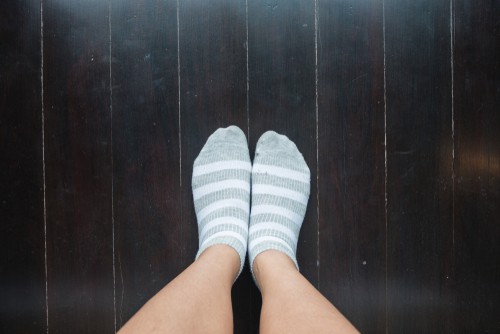
When you’re spending most of your time in moist areas such as locker rooms and bathrooms, you’ve got a high risk of catching the athlete’s foot fungus as it is quite contagious in these areas. Thus, it’s best to go for preventive measures and put on flip flops rather than being barefoot in moist areas. Always keep the feet dry, clean, and also well-ventilated.
Also, avoid sharing socks, towels, shoes, and other personal things as well.




